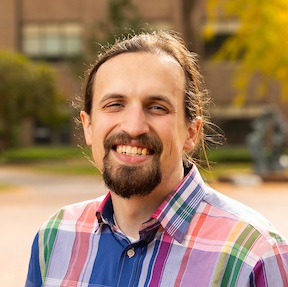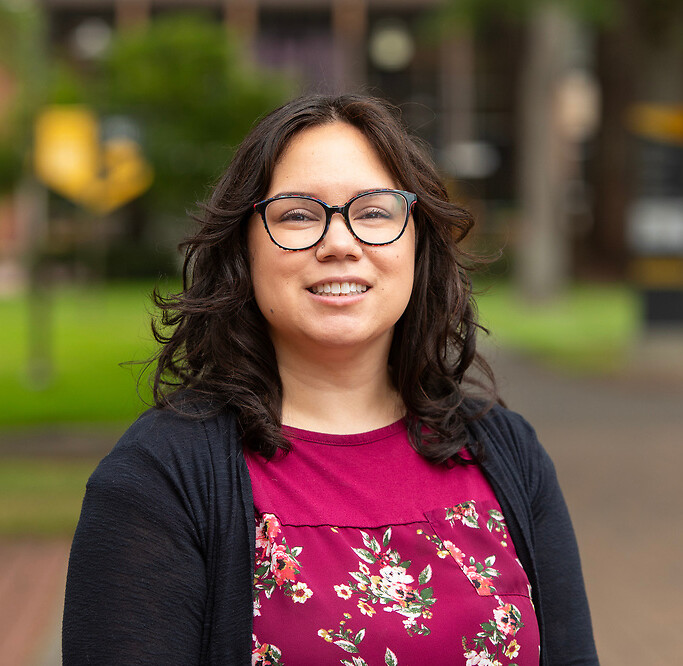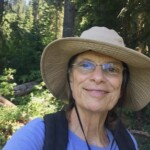Page 12 • (1,304 results in 0.018 seconds)
-
Graduation Year: 2014 Location: Oaxaca, Mexico Project Title: Qualitative Analysis of Water-Related Issues in the Rio Verde-Atoyac Watershed and Investigation of Alternative Technologies for Water
investigation of the water-related issues faced by communities in Oaxaca’s Rio-Verde Atoyac Watershed. I also studied the science behind various water-conservation technologies that are currently being developed in Oaxaca to combat these issues. The research I did was a continuation of an investigation that I began with the Institute of Nature and Society of Oaxaca (INSO) during an internship with the organization in December of 2012. The analysis of qualitative surveys allowed for the identification of the
-

Visiting Assistant Professor | Department of Biology | cmschiller@plu.edu | 253-535-7004
Chris Schiller Visiting Assistant Professor he/him Phone: 253-535-7004 Email: cmschiller@plu.edu Off
Office HoursM & W: 9:10 am - 11:30 amFri: 12:30 pm - 1:30 pmMon - Fri: -Area of Emphasis/Expertise -

Visiting Assistant Professor | Department of Biology | thorm@plu.edu | 253-535-7081
Teresa Horm Visiting Assistant Professor she/her/hers Phone: 253-535-7081 Email: thorm@plu.edu Office Location: Rieke Science Center - 154 Office Hours: (On Campus) Wed: 10:30 am - 11:30 am (On Campus) Thu: 10:30 am - 11:30 am (On Campus) Thu: 2:00 pm - 3:00 pm (On Campus) Mon - Fri: By Appointment Curriculum Vitae: View my CV Professional Education Ph.D., Molecular and Cellular Biology, University of Arizona, 2013 B.S. , Biochemistry, University of Washington, 2005 Areas of Emphasis or
Office HoursWed: 10:30 am - 11:30 amThu: 10:30 am - 11:30 amThu: 2:00 pm - 3:00 pmMon - Fri: - -

Associate Professor of Biology | Environmental Studies | haberlrc@plu.edu | 253-535-7199
Romey Haberle Associate Professor of Biology she/her/hers Phone: 253-535-7199 Email: haberlrc@plu.edu Office Location: Rieke Science Center - 142 Professional Education Ph.D., Botany, University of Texas at Austin, 2006 M.S., Biology, Northern Arizona University, 1998 B.S., Botany, Northern Arizona University, 1993 M.L.S., Library Science, University of Arizona, 1983 B.A., History, Skidmore College, 1975 Areas of Emphasis or Expertise Plant Systematics and Evolution Selected Articles Andrew A
Area of Emphasis/Expertise -

Consultant | Writing Center | Daniel is a Biology and English double major.
Daniel Bensen Consultant He/Him Biography Biography Daniel is a Biology and English double major. He enjoys just a bit of everything: getting outdoors, climbing, reading, writing poetry, and playing piano.
-
If you’re a recent grad looking for outdoor, environmental work or experience in state government or local environmental nonprofits, the Individual Placement Program with the Washington Conservation Core might be a good fit for you! There are positions at Ecology Headquarters in Lacey as well…
WCC Individual Placement Program Posted by: nicolacs / July 19, 2018 July 19, 2018 If you’re a recent grad looking for outdoor, environmental work or experience in state government or local environmental nonprofits, the Individual Placement Program with the Washington Conservation Core might be a good fit for you! There are positions at Ecology Headquarters in Lacey as well as Padilla Bay Research Reserve near Mt. Vernon. The following link goes to an article about the WCC with links to apply
-
Profs, students talk about going green PLU has made great strides in reaching its sustainability goals, campus leaders and students stressed last week. However, especially in the area in energy conservation, PLU staff and students need to be conscious off turning off the lights or…
September 8, 2008 Profs, students talk about going green PLU has made great strides in reaching its sustainability goals, campus leaders and students stressed last week. However, especially in the area in energy conservation, PLU staff and students need to be conscious off turning off the lights or reducing the heat. After President Loren J. Anderson’s State of the University address, about a dozen faculty and students talked about how the campus was doing in its conservation goals, including
-

By Zach Powers PLU Marketing & Communications TACOMA, WA (Jan. 12, 2015)—The Pacific Lutheran University Sustainability Committee is now accepting proposals for projects that aim to make the PLU campus more sustainable. Accepted projects will advance energy conservation in any aspect of PLU life, feature…
Call to PLU Community Members for Green Fund Sustainability Project Proposals Posted by: Zach Powers / January 12, 2015 Image: [Photo by John Froschauer] January 12, 2015 By Zach Powers PLU Marketing & Communications TACOMA, WA (Jan. 12, 2015)—The Pacific Lutheran University Sustainability Committee is now accepting proposals for projects that aim to make the PLU campus more sustainable. Accepted projects will advance energy conservation in any aspect of PLU life, feature students in leadership
-

TACOMA, WASH. (Aug. 1, 2016)- Bryanna Plog ’10 seems to have done it all in her years after Pacific Lutheran University – teaching English abroad in Colombia, writing books about travel and interning for a conservation nonprofit. But now, she says, serving as a park…
English abroad in Colombia, writing books about travel and interning for a conservation nonprofit. But now, she says, serving as a park ranger feels like the perfect fit.“I really love working for the Park Service because it’s an organization I can really believe in,” Plog said, “tasked with preserving places for future generations and also making sure people can enjoy them now. I love being part of that.” Plog, who is currently working at Yosemite National Park in California, double majored in
-

Fiona Ashton-Knochel ’24 is spending her summer on a bird refuge in Brigham City, Utah. The Environmental Studies major sat down with us to discuss her exciting internship and to offer suggestions for anyone looking to land their own internship working in conservation. Why did…
Migratory Bird Refuge in Utah—how did you secure that internship? I wanted to be in my home state (Utah) for the summer, so I searched for opportunities to work out there–I found this internship online! I looked specifically for paid summer internships involving environmental science and conservation. What was the application process like for this internship? Besides a thorough brushing-up on my knowledge of ecology and land management, the baseline application process involved an interview with people
Do you have any feedback for us? If so, feel free to use our Feedback Form.


